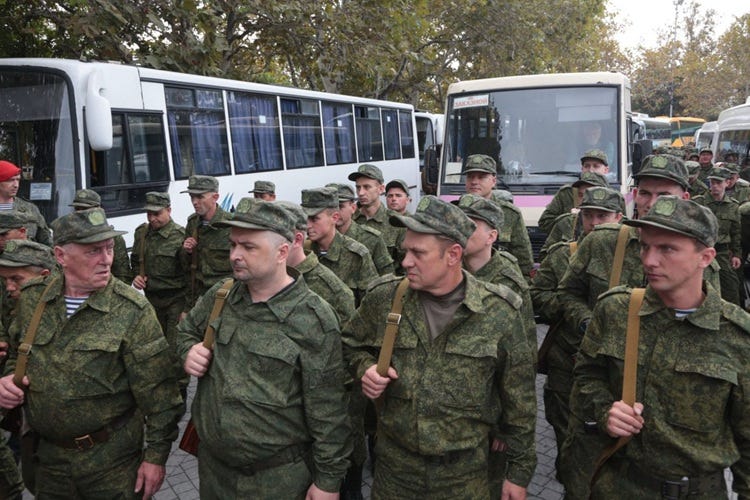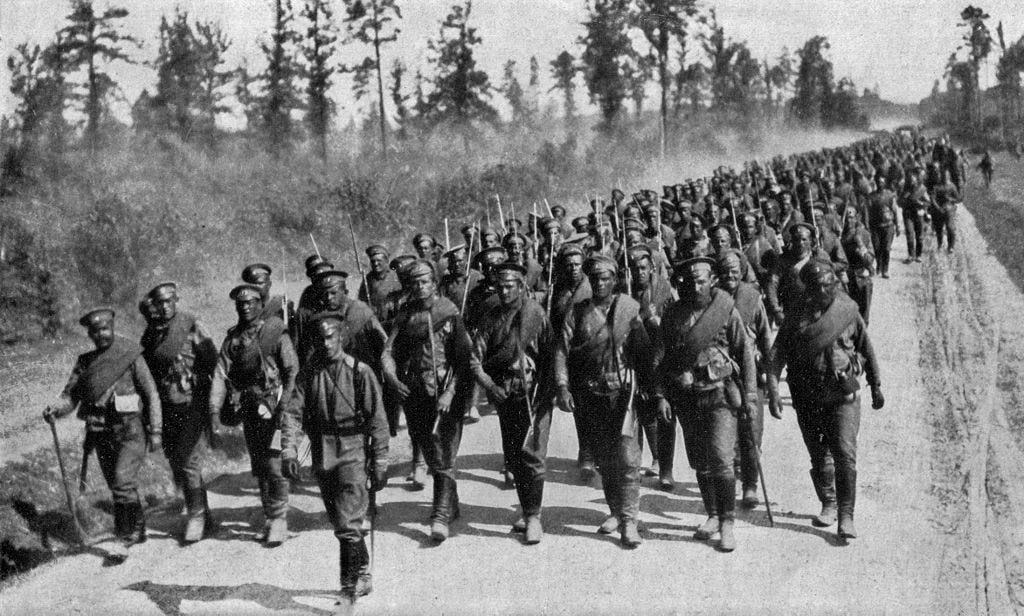Thank You, Mr. President!
Donald Trump comes through at a moment when V. Putin really needs some help
The Institute for the Study of War (ISW) has released an analysis of the course of the Russo-Ukrainian War’s third year. (It can be read online or downloaded as a PDF.) Its conclusions are summed up by its title: “Russia Has Failed to Break Ukraine.”
In 2024, the Russian military command made a major effort, by way of several large offensives, to rupture Ukrainian defenses on the eastern front and seize those portions of Donetsk and Luhansk oblasts still in Ukrainian hands. But though the Russians made some marginal gains, they failed to break the Ukrainian Army or even drive it back very far. And in the process, the Russian armies suffered astronomical personnel and equipment losses. The Ukrainian military command estimates that Russian casualties totaled more than 434,000 in 2024, including 150,000 killed in action. Equipment losses have also been very high. For instance, the battle for the village of Avdiivka (1 January-16 February) cost the Russians 201 tanks and 492 other armored fighting vehicles.
Putin’s enablers and apologists in America and elsewhere wave away such reports of high casualties with the claim that a war of attrition favors Russia in the long run. But however true this may be in principle, it’s contradicted by the facts on the ground. The ISW notes that the losses sustained by the Russian Army in 2024 cannot be made good for 2025 without a general mobilization of the Russian armed forces and military industrial base. That is to say, an attrition strategy can only succeed in the context of a maximum effort.
Such a general mobilization would involve a major commitment of conscript soldiers to frontline fighting, as well as a large-scale callup of reservists, far beyond the limited callups that have been decreed up to now. But for political reasons, these are measures that the Putin regime has been most reluctant to adopt. They’d be extremely unpopular with the Russian people, would have negative economic consequences, and would amount to a tacit acknowledgement that Russia is not in fact winning the war.
Reading the ISW analysis, I was unavoidably reminded of the futile Western Front offensives of the French and British armies during the First World War: battles in which rivers of blood were poured out in exchange for a few square miles of ground. Those offensives demonstrated with maximum clarity the truth of Clausewitz’s dictum that defense is the stronger form of war. Today in eastern Ukraine, that lesson is being driven home anew.
In 2024, the Russian offensives were characterized by mass attacks, some armored, some infantry, that either broke down or succeeded only at the cost of high casualties. It seems to me that the Russian Army is trying, with little or no success, to replicate the methods perfected by the USSR during the Second World War: a successful adaption of tactical and operational doctrine to both the strengths and weaknesses of the Red Army.
Briefly to summarize, the Red Army’s problem at the beginning of the war was its shortage of qualified specialists for those arms of the service requiring technical expertise, such as the artillery, the engineers, and the signal corps. The early course of the war made it clear that such deficiencies could only be overcome by a thorough reorganization of the army, concentrating scarce technical specialists in large formations such as engineer brigades, artillery divisions, etc. The Red Army’s basic unit, the rifle division, was largely stripped of such specialists, and its artillery strength was greatly reduced. The mobile forces were reorganized along similar lines.
From mid-1943 to 1945, a major Red Army offensive was conducted as follows. (1) An artillery preparation by a massive concentration of conventional and rocket artillery, to suppress the German defenses. (2) A mass attack by rifle divisions supported by tanks and assault guns, to open a hole in the defenses. (3) A commitment of mobile forces (tank corps, mechanized corps, cavalry corps) through the breach and a drive into the enemy’s rear area, usually aimed at some vital point such as a node of rail and road communications. That objective achieved, the offensive would be closed down.
There was nothing fancy about this method: Purely and simply it was a punch in the enemy’s face. It usually cost the Russians many casualties—but it worked. And as German Army’s strength dwindled under the pressure of a multifront war, it worked better and better.
But the Russian Army today seems incapable of replicating the Red Army’s success in a similar situation, fighting a numerically inferior but qualitatively superior army. Partly this is because, as noted above, attrition can’t be made effective in the absence of a maximum effort, and partly because the Russian Army is incapable of coordinating offensive action in the manner of the Red Army. Indeed, it bears more resemblance to the Russian Army circa 1914:
The ISW analysis notes that absent full-scale mobilization, Russia will be unable to sustain the 2024 tempo of operations in 2025. The war, therefore, is effectively stalemated. This is an indictment of the Biden Administration, which botched its Ukraine policy by stinting on military aid. And it goes to show just how timely, from the Russian point of view, is Trump’s abandonment of the US commitment to Ukraine. He’s doing V. Putin a huge favor at a moment when pressure can and should be applied to Russia to make some concessions for the sake of peace.
That’s not only disgraceful. It’s profoundly stupid.





"The Ukrainian military command estimates that Russian casualties totaled more than 434,000 in 2024, including 150,000 killed in action." That leaves what, 284, 000 killed how?